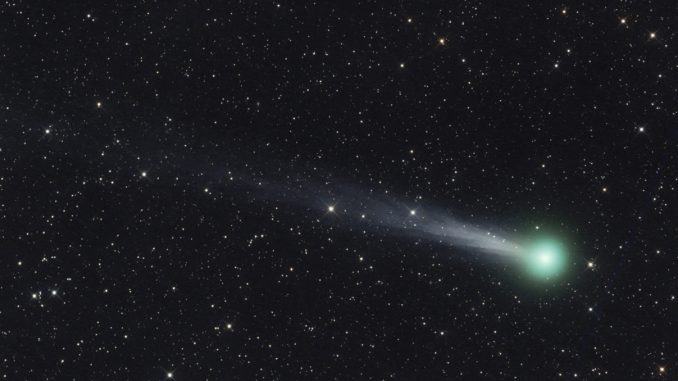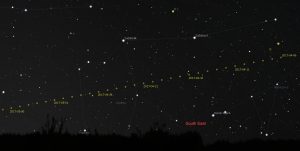
Comet PanSTARRS (C/2015 ER61) has just outburst from magnitude 7.4 to 6.5 (estimated) over the night of 04-05 April. This takes the comet within easy range of standard binoculars. The above image was taken by Gerald Rehmann, Namibia, South Africa showing a bright nucleus and a nice developing tail. If you could go back in time to February, it would be a smart move to place some bets down on bright comets popping up in spring 2017. This latest outburst takes the current tally of binocular brightness comets to 4 with comets 45P/Honda-Mrkos-Pajdusakova, 41P/Tuttle-Giacobini-Kresak and more recently Comet Lovejoy (C/2017 E4) all reaching this threshold.
C/2015 ER61 was first discovered in the March of 2015 by the PanSTARRS 1 telescope on Mt Haleakalā, Hawaii. The comet was a desperately faint magnitude 21 at the time. Since that time, the comet has steadily brightened and then through March brightened considerably to magnitude 8.5. To catch a glimpse of the comet you’ll need to be an early bird and get up before dawn. Located in Aquarius low in the south eastern sky, it rises just an hour or so before dawn. The comet is lower in the sky than Comet Lovejoy in Pegasus. Reasons for the outburst are not officially known however it is likely that fresh material is gassing out from the nucleus.
Finder Charts



Leave a Reply